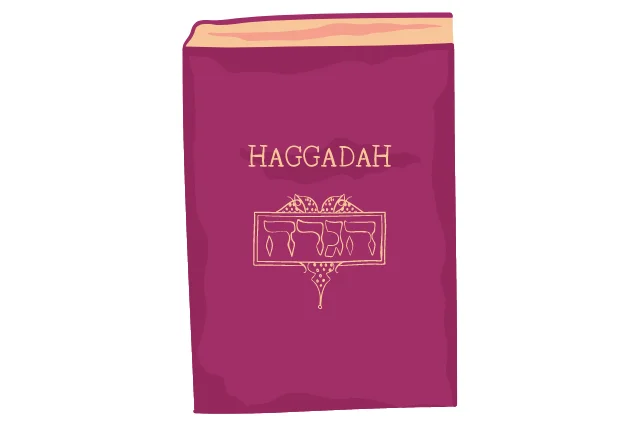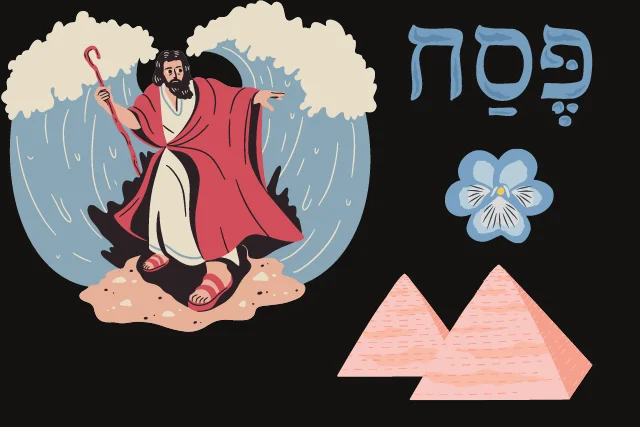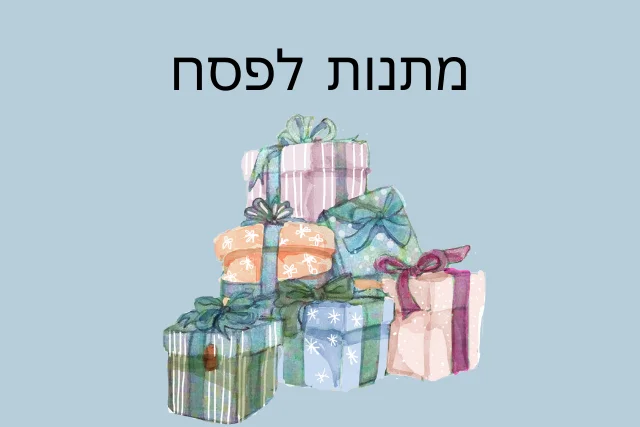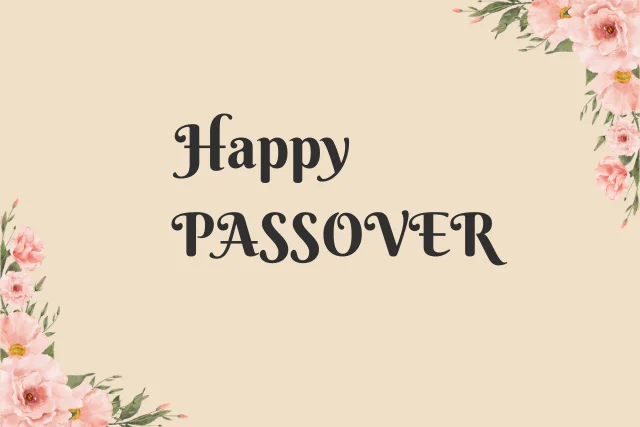As an Amazon Associate, I earn from qualifying purchases. This post may contain affiliate links. If you make a purchase through these links, we may earn a commission at no additional cost to you. Please read our full disclosure here.
The Passover Seder is a ceremonial meal and ritual observance that marks the beginning of the Jewish holiday of Passover. Seder, meaning “order” or “arrangement” in Hebrew, refers to the structured order of the evening’s events, which follow a prescribed sequence outlined in the Haggadah, a text that guides participants through the Seder.
During the Seder, participants engage in a series of rituals, prayers, and symbolic acts that help retell the Exodus story and reinforce its lessons of redemption, faith, and gratitude. These rituals are steeped in tradition and are passed down from generation to generation, creating a sense of continuity and connection with the past.
The Seder plate
Central to the Seder is the Seder plate, which holds symbolic foods representing different aspects of the Passover story. These include bitter herbs (maror) to symbolize the bitterness of slavery, a mixture of apples, nuts, and wine (charoset) to represent the mortar used by the Israelites to build structures in Egypt, and a roasted shank bone (z’roa) to symbolize the sacrificial lamb. Additionally, the Seder plate typically includes items like a boiled egg (beitzah), representing renewal and the cycle of life, and a vegetable such as parsley (karpas), symbolizing springtime and rebirth.
The Haggadah

The Haggadah is a guidebook used during the Passover Seder. It contains instructions, prayers, and readings that lead participants through the ceremony, retelling the story of the Israelites’ liberation from slavery. The word ‘Haggadah’ means ‘telling’ or ‘narrative’ in Hebrew, highlighting its role in recounting the Exodus story and transmitting Jewish traditions from generation to generation.
The Structure of the Seder
The Passover Seder follows a structured order, outlined in the Haggadah, which guides participants through the evening’s rituals and storytelling. While there may be variations in customs and traditions among different Jewish communities, the basic elements of the Seder remain consistent.
Kadesh – Sanctification: The Seder begins with the recitation of Kiddush, a blessing over wine, marking the sanctification of the holiday and the start of the Seder.
Urchatz – Washing: Participants ritually wash their hands, symbolizing purification and readiness for the meal.
Karpas – Vegetable: A leafy vegetable, typically parsley or celery, is dipped in saltwater and eaten, symbolizing the tears shed by the Israelites during slavery.
Yachatz – Breaking of the Matzah: The middle matzah from the stack of three on the Seder plate is broken in half. One half is set aside as the afikomen, to be eaten later in the meal, while the other half remains on the Seder plate.
Maggid – The Storytelling: The central part of the Seder, during which the Exodus story is retold through readings from the Haggadah, discussions, and songs. The story of the Israelites’ journey from slavery to freedom is recounted, emphasizing themes of faith, perseverance, and redemption.
Rachtzah – Washing of the Hands: Another ritual handwashing, this time before the meal.
Motzi – Blessing over Bread: The traditional blessing over bread is recited, followed by the breaking of the matzah, which is then eaten.
Matzah and Maror – Eating the Bitter Herbs: Participants eat bitter herbs, typically horseradish, symbolizing the bitterness of slavery, along with matzah and charoset, a sweet mixture representing the mortar used by the Israelites.
Korech – Hillel Sandwich: A sandwich is made with matzah and bitter herbs, recalling the practice of the great sage Hillel.
Shulchan Orech – The Festive Meal: Participants enjoy a festive meal together, featuring traditional Passover dishes such as matzah ball soup, brisket, and roasted vegetables.
Tzafun – Eating the Afikomen: The afikomen, which was hidden earlier in the Seder, is retrieved and eaten as the final part of the meal.
Barech – Grace after Meals: Birkat Hamazon, the grace after meals, is recited, followed by additional blessings over wine.
Hallel – Songs of Praise: Psalms of praise, known as Hallel, are recited or sung, expressing gratitude and joy for the redemption experienced by the Israelites.
Nirtzah – Conclusion: The Seder concludes with songs, prayers, and expressions of hope for the future redemption of all humanity.
By following this structured order, participants engage in a meaningful and interactive retelling of the Exodus story, connecting with their heritage and reinforcing the values of freedom, justice, and compassion.
Meaning Behind Rituals
The Passover Seder is rich with symbolic rituals and traditions, each carrying profound significance and deepening the participants’ connection to the Exodus story. Here are some of the key rituals and their meanings:
Four Cups of Wine: Throughout the Seder, participants drink four cups of wine, each symbolizing a different aspect of redemption: freedom, deliverance, redemption, and the future Messianic redemption. The four cups serve as reminders of the Israelites’ journey from slavery to freedom and of their ongoing hope for ultimate redemption.
Matzah: Eating unleavened bread, or matzah, during the Seder is a central commandment of Passover. Matzah symbolizes the haste with which the Israelites fled Egypt, as they did not have time for their bread to rise. It also represents humility and the simplicity of freedom.
Bitter Herbs (Maror): The consumption of bitter herbs, such as horseradish, serves as a reminder of the bitterness of slavery endured by the Israelites in Egypt. Eating maror prompts participants to reflect on the hardships faced by their ancestors and to empathize with the suffering of others.
Charoset: A sweet mixture made of fruits, nuts, and wine, charoset symbolizes the mortar used by the Israelites in building the pyramids of Egypt. Its sweetness serves as a reminder of the hope and redemption that emerged from the bitter experiences of slavery.
Afikomen: The afikomen, a piece of matzah set aside during the Seder, symbolizes the Passover sacrifice that was eaten at the end of the meal in ancient times. It is hidden during the Seder and later retrieved and eaten as a dessert, symbolizing the continuity of Jewish tradition and the hope for future redemption.
Cup of Elijah: Towards the end of the Seder, a fifth cup of wine is poured but left untouched, symbolizing Elijah the Prophet, who is believed to herald the arrival of the Messiah and the ultimate redemption of the Jewish people. The opening of the door for Elijah reflects the ongoing hope for a world of peace and justice.
By participating in these rituals and reflecting on their meanings, Seder participants engage in a powerful reenactment of the Exodus story, connecting with the ancient struggles of their ancestors and reaffirming their commitment to freedom, justice, and redemption.
Family Traditions
The Passover Seder is not only a time to commemorate the ancient Exodus story but also an opportunity for families to create their own unique traditions and customs, passed down from generation to generation. Here are some examples of family traditions that enrich the Passover experience:
Special Recipes: Many families have cherished recipes that have been handed down through the generations and are enjoyed specifically during Passover. These recipes often include traditional dishes such as matzah ball soup, brisket, gefilte fish, and various types of kugel. Sharing these recipes and cooking together can strengthen family bonds and create lasting memories.
Personalized Haggadahs: Some families create their own Haggadahs, incorporating family stories, poems, artwork, and reflections alongside the traditional text. Personalized Haggadahs allow families to tailor the Seder experience to their own values, beliefs, and experiences, making it more meaningful and relevant to their lives.
Interactive Activities: To engage children and make the Seder more interactive, families often incorporate games, songs, and activities into the evening. This may include asking the Four Questions, searching for the afikomen, acting out parts of the Exodus story, or creating crafts related to Passover themes.
Guests and Community: Many families invite friends, neighbors, and extended family members to join their Seder table, embracing the spirit of hospitality and inclusivity that is central to the Passover celebration. Welcoming guests from diverse backgrounds can enrich the Seder experience and foster connections within the community.
Memory Sharing: Passover is a time for storytelling, and many families use the Seder as an opportunity to share memories and anecdotes from past Seders, as well as stories of their ancestors’ journeys and experiences. This tradition helps to preserve family history and strengthen bonds across generations.
Charitable Acts: In addition to the rituals of the Seder, some families incorporate acts of tzedakah (charity) and social justice into their Passover observance. This may include donating to organizations that support vulnerable communities, participating in volunteer activities, or engaging in discussions about contemporary issues of freedom and oppression.
By embracing these family traditions and customs, individuals and families can infuse the Passover Seder with deeper meaning, connection, and joy, ensuring that its timeless messages of freedom and redemption continue to resonate in their lives and communities.
Recipes
Passover is a time for enjoying delicious traditional dishes that are steeped in symbolism and history. Here are some classic Passover recipes to enhance your Seder meal:
Matzah Ball Soup: This iconic Passover dish features light and fluffy matzah balls (made from matzah meal, eggs, and oil) served in a flavorful chicken broth with carrots and celery. It’s a comforting and nourishing start to the Seder meal.
Charoset: A sweet and fragrant mixture of chopped apples, nuts, honey, cinnamon, and wine, charoset symbolizes the mortar used by the Israelites in building the pyramids of Egypt. It’s traditionally eaten with matzah during the Seder meal.
Brisket: A tender and flavorful brisket, slow-cooked with onions, garlic, and a savory sauce, is a beloved main dish at many Passover Seders. It’s a hearty and satisfying option that pairs well with traditional side dishes like roasted potatoes or tzimmes (sweet carrot and fruit stew).
Gefilte Fish: This traditional Jewish dish consists of ground fish (typically a combination of whitefish, carp, and/or pike) formed into balls or patties and simmered in a flavorful broth. Gefilte fish is often served as an appetizer at Passover Seders, accompanied by horseradish or a tangy beet-horseradish relish.
Potato Kugel: A classic Passover side dish, potato kugel is a comforting casserole made with grated potatoes, onions, eggs, and seasoning. It’s baked until golden and crispy on the outside, with a tender and savory interior. Potato kugel is a versatile dish that pairs well with a variety of main courses.
Passover Brownies: For a sweet ending to your Seder meal, indulge in rich and decadent Passover brownies made with matzah cake meal, eggs, sugar, cocoa powder, and chocolate chips. These fudgy brownies are a delicious treat that everyone will love.
Matzah Toffee (Matzah Crack): A simple yet irresistible Passover dessert, matzah toffee (also known as matzah crack) is made by layering matzah with caramelized sugar and chocolate, then baking until golden and bubbly. Once cooled, it’s broken into pieces for a crunchy and addictive sweet treat.
These classic Passover recipes are sure to delight your guests and add flavor and tradition to your Seder meal. Enjoy sharing these delicious dishes with your loved ones as you celebrate the holiday of freedom and redemption.
Tips for Hosting or Attending a Seder
Whether you’re hosting your own Passover Seder for the first time or attending as a guest, here are some practical tips to ensure a meaningful and enjoyable experience:
Plan Ahead: Start preparing for the Seder well in advance by creating a guest list, planning the menu, and organizing the necessary ritual items, such as the Seder plate, matzah, and Haggadahs. Consider any dietary restrictions or preferences of your guests when planning the menu.
Familiarize Yourself with the Haggadah: If you’re hosting, take the time to familiarize yourself with the Haggadah and the order of the Seder rituals. Consider selecting a Haggadah that resonates with your values and preferences, or create your own customized version.
Engage Your Guests: Encourage active participation from all guests by inviting them to read passages from the Haggadah, share personal reflections, or lead discussions on relevant themes. Create an inclusive and welcoming atmosphere where everyone feels valued and heard.
Provide Guidance: If you have guests who are unfamiliar with the Passover Seder or Jewish traditions, offer guidance and explanations throughout the evening. Share the significance of the rituals, symbols, and prayers, and answer any questions that may arise.
Incorporate Meaningful Traditions: Infuse the Seder with meaningful traditions and customs that reflect your family’s values and heritage. Share family stories, sing traditional songs, and incorporate rituals that resonate with your guests.
Make it Interactive: Keep guests engaged and entertained by incorporating interactive elements into the Seder, such as games, quizzes, or creative activities related to Passover themes. Encourage participation from guests of all ages to create a lively and enjoyable atmosphere.
Be Flexible: Remember that the Seder is a time for celebration and reflection, not a rigidly scripted performance. Be flexible and adaptable to the needs and preferences of your guests, and allow for spontaneity and organic moments of connection.
Express Gratitude: Take time during the Seder to express gratitude for the blessings in your life, including the opportunity to gather with loved ones and celebrate the holiday together. Encourage guests to share what they are thankful for and to reflect on the meaning of freedom and redemption in their own lives.
Follow Up: After the Seder, follow up with guests to express appreciation for their presence and participation. Share memories and reflections from the evening, and consider incorporating feedback into future Seder planning.
By following these tips, you can create a memorable and meaningful Passover Seder experience for yourself and your guests, fostering connection, reflection, and joy.



